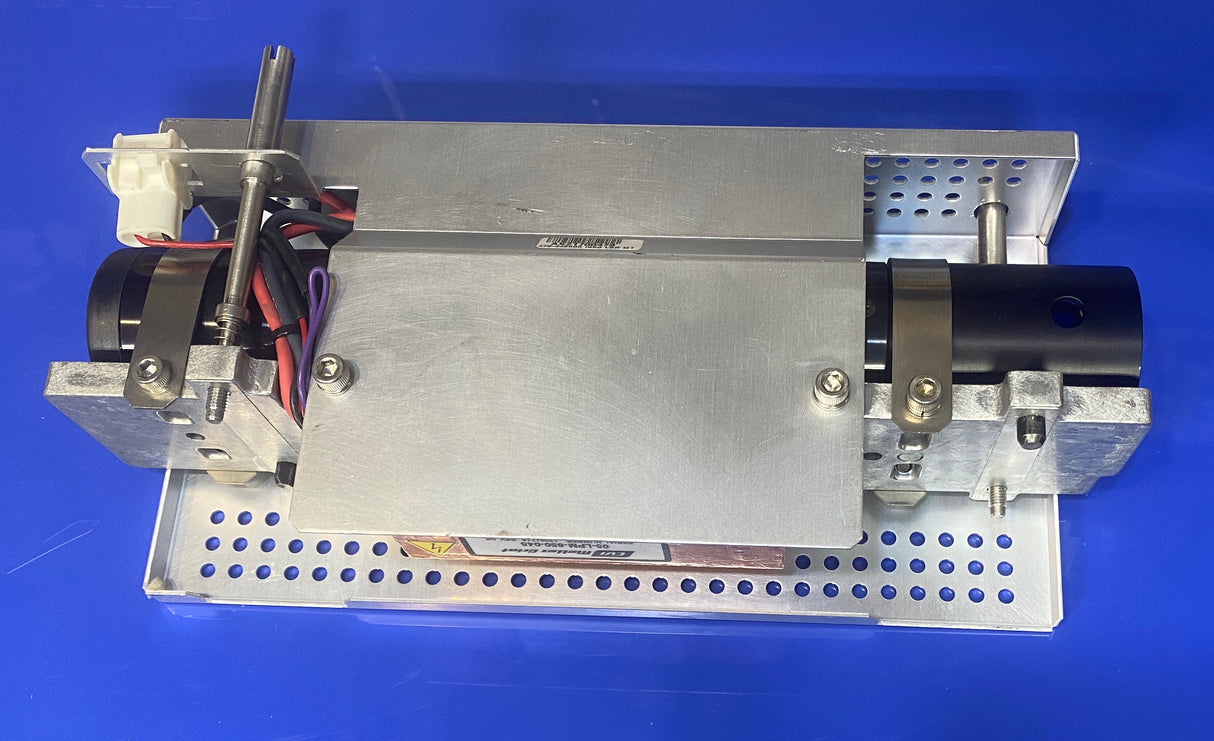Date: 8/16/2024
White Bear Photonics, LLC
2157 Randy Ave
White Bear Lake, MN 55110
Summary
In order, the top three consumables of an FTIR are the desiccant, IR source, and HeNe laser. The HeNe laser is a critical component of the Interferometer and is used to calibrate the instrument as well as control the moving mirror.
Replacement of the HeNe laser is often needed due to:
- High laser gains after alignment (pegged at maximum of 240).
- Scan issues resulting to no scanning, intermittent bad scans, or noisy data.
- No visible laser light in sample compartment or from the laser head (dead laser).
- Old lasers (from the manufacturing date shown on the head) of more than 7 years will often show one or more of these top three symptoms.
Removing the old laser
- Turn off the FTIR.
- Remove back Panel (single screw).

- Unplug the laser power connector on the laser module.

- Using a large Philips screw driver loosen screws, and pull module out.

Installation of the new laser
- Remove tape on laser (protects the lens from dust/handling).
- Reverse the same sequence as above in the removal process.
- The laser can only go in one way. On the bottom side of the module there are dowel pins that assure the laser will be seated for proper alignment.
- Power the FTIR up.
- Open the Omnic Application.
- Go into Experiment Setup, then the Diagnostics tab.
- Hit Align and verify the alignment has completed.
- When the alignment is complete you should see an interferogram of some amplitude as shown below.

- Exit Omnic and go into Local Disk C
- ->Program Files->Omnic-> and run the application called “BenchStatusReport (Running this status report application will report all settings in a TXT file)

- Go into My Documents.

- Look for the latest Bench Report.

Note: all of the Laser gain values should ideally be less than 100 with a new laser. You can use this report for future reference for other settings as well. This report is often used by Thermo Tech support for diagnostics on the instrument.
Final Comments
Based on the instrument, this process may not result in the instrument successfully scanning if the instrument was not used for an extended period or time or came out of storage. Since nearly all FTIRs use KBR optics (salt optics), they can easily be damaged by humidity. When this happens there will be a significant amount of scattering in HeNe laser form the KBR beam splitter in the interferometer. Secondly, if the beam splitter is partially “fogged”, this will result in high laser gains (all three, X, Y, and R) after the auto alignment. In general, when all three laser gain parameters are high it is usually a result of a weak laser or a fogged beam splitter. When one or two of the laser gain values are low (normal, and well less than 100), with the other(s) high at 240 it becomes an alignment issue with the laser beam either not being uniform or off the laser detector.


